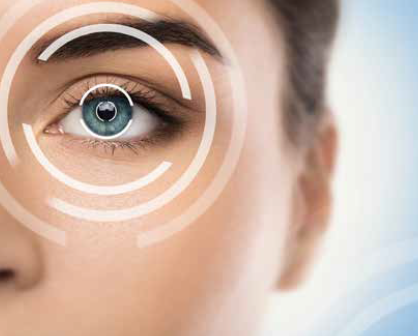Cataract, Refractive
Knowing Lens Tilt
Assessing physiological lens tilt can help improve post-surgical outcomes.

Dermot McGrath
Published: Monday, May 1, 2023
“ Dr Höftberger said the physiological tilt of the phakic eye showed a normal distribution, with a phakic tilt above 7 degrees in 8.3% of all cases. “
Dermot McGrath Reports
Preoperative crystalline lens tilt varies significantly between patients—and in a small but relevant number of patients, the tilt values exceed a threshold that may negatively impact the postoperative refractive outcome, according to Dr Theresa Höftberger.
“Our study showed the lens tilt of a certain percentage of patients exceeds the critical level of 7 degrees. It could be relevant to detect these cases and include the predicted postoperative tilt in the IOL power calculation,” she said. “Including the tilt prediction in the IOL power calculation would help to improve long-term post-surgical outcomes.”
Although modern imaging devices typically provide detailed information about phakic intraocular lens tilt, little data currently exists on the values that influence crystalline lens tilt. Misalignment of intraocular lenses, such as tilt, commonly causes visual deterioration and negatively affects optical performance after cataract surgery.
“Previous studies already showed there is a significant correlation between the physiological tilt and the IOL tilt after cataract surgery. In 2017, we already reported that preoperatively measured lens tilt is useful for predicting the postoperative tilt,” Dr Höftberger explained. “The IOL tilt is a very important source of error in the IOL power calculation. Therefore, including preoperative measurements would help to obtain better outcomes and improve long-term post-surgical outcomes in patients receiving the IOL.”
Dr Höftberger’s study included data from 4,731 phakic eyes of 2,531 patients collected between June 2020 and October 2022 at the Kepler University Clinic in Linz, Austria.
Patients scheduled for preoperative assessments were biometrically measured during the preliminary examination using the IOLMaster 700 (Zeiss) and the Casia2 (Tomey) swept source OCT devices. The IOLMaster 700 measured the axial length, decentration, central lens thickness, and the lens equator thickness, while the Casia2 obtained the IOL tilt and physiological tilt—defined as the angle between the optic axis of crystalline lens and the cornea’s vertex normal.
Discussing the results, Dr Höftberger said the physiological tilt of the phakic eye showed a normal distribution, with a phakic tilt above 7 degrees in 8.3% of all cases.
“We found no statistically significant difference between females and males, nor a significant correlation with age,” she said. “This differs from a recent study by Li [et al.] that found a statistically significant difference of the crystalline lens among several age groups, especially with a lower physiological tilt in the age group from 18 to 40 years.”1
In the physiological tilt distribution of right and left eyes, the researchers found a mean tilt of 4.9 degrees with an inferior temporal tilting and a mirror symmetry of tilt. Other significant parameters affecting the tilt—such as axial length, decentration, Chang-Waring chord, and lens equator thickness - showed an area under the curve (AUC) value of 0.9.
These parameters were then entered in a random forest plot machine learning algorithm, resulting in an out-of-bag error rate of 0.1, showing tilt can be predicted with good accuracy.
Dr Höftberger gave this presentation at the 27th ESCRS Winter Meeting in Vilamoura, Portugal.
For citation notes, see page 46.
Theresa Höftberger PhD is a clinician and researcher at the Kepler University Clinic, Linz, Austria. theresa.hoeftberger@kepleruniklinikum.at

Latest Articles
Beyond the Numbers
Empowering patient participation fosters continuous innovation in cataract surgery.
Thinking Beyond the Surgery Room
Practice management workshop focuses on financial operations and AI business applications.
Aid Cuts Threaten Global Eye Care Progress
USAID closure leads retreat in development assistance.
Supplement: ESCRS Clinical Trends Series: Presbyopia
Debate: FS-LASIK or KLEx for Hyperopia?
FS-LASIK has more of a track record, but KLEx offers advantages.
Four AI Applications Ready for Practice
Commercial offerings may save time, improve practice and research.
Perioperative Medication Regimens for Cataract Surgery
Randomised controlled clinical trial results provide evidence-based guidance.
Should Fuchs’ Dystrophy Patients Get Premium Lenses?
Patients’ demand for premium IOLs despite contraindications pose a challenge in Fuchs’ dystrophy treatment.
Avoiding Posterior Capsule Rupture
Imaging may help, but surgical technique is key for managing posterior polar cataracts.
The Philosophy of Innovation
Deluded personality essential for initiating and completing the journey.